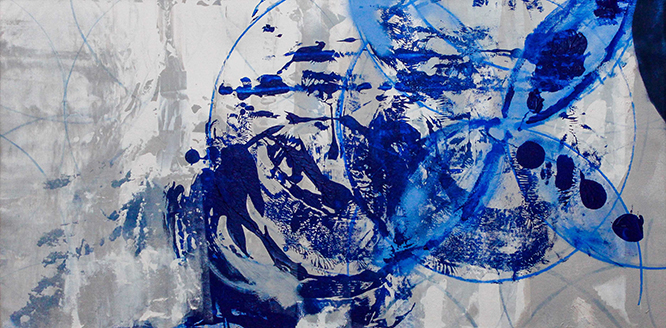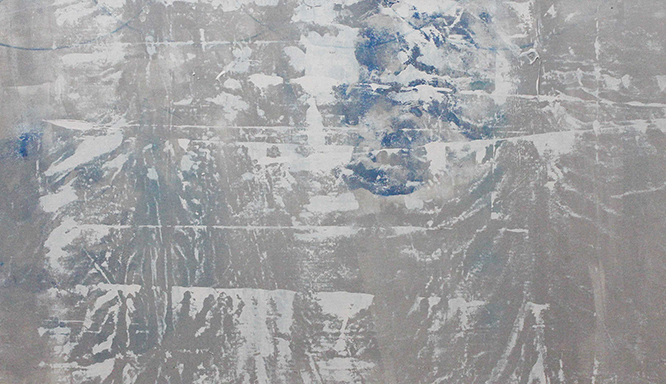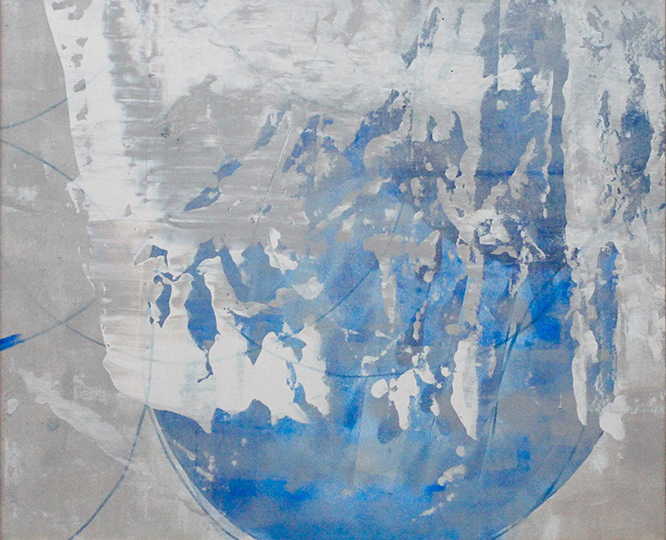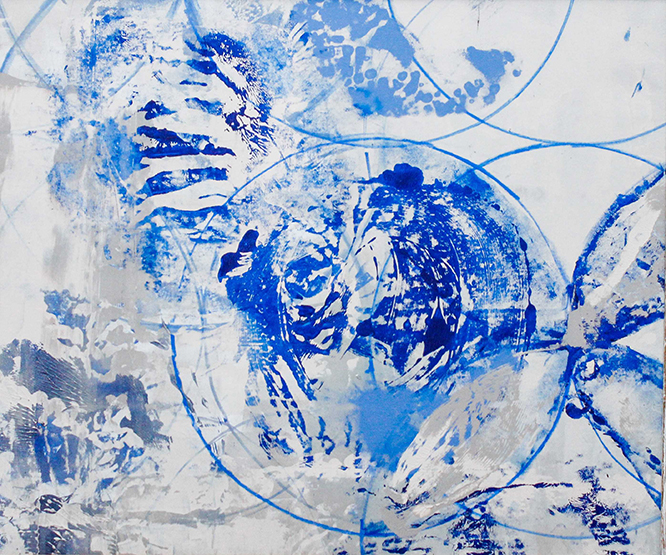
ABOUT ELINE MARTHERUS
Eline Martherus is a contemporary dutch painter, currently living in Amsterdam. She has been working as an artist for six years so far. Before, she worked as a designer with a background in textile production technology. Eline has exhibited her works nationally, as well as in Indonesia and the United Kingdom.
Her art has two opposite yet complementary elements. On the one hand, she utilizes a ‘sacred’ geometry, as she defines it, intending to build a Flower of Life, which is the basis of Hu.
‘Hu’ is a pseudonym in her art, which symbolizes the continuous reinterpretation of universal connotations, represented by placing seven circles in an overlapping symmetry.
On the other hand, Eline utilizes organic and spontaneous painting techniques.
HU AND THE FLOWER OF LIFE
“By definition, the Flower of Life symbolizes creation and reminds us of the unity of everything: we are all built from the same blueprint.” She explains. It has a central role in her work and identity as it symbolizes the deep spiritual meaning and enlightenment of her artistic and personal journey. “As we are all built from the same blueprint, the color blue has naturally become the central color in Hu.”, she continues.


ELINE MARTHERUS’ TECHNIQUE
Eline mainly opts for sponges and brushes to add layers to her artworks. Acrylic paint and wax and oil paint are her primary mediums, although often enriched with hand-embroidery and tufting techniques using naturally dyed yarn. “The plates I use as stamps or as templates come out of huge geometrical wooden plates which I cut with a laser machine,” she adds.

Eline Martherus

INSPIRATION AND PRACTICE BEHIND ELINE MARTHERUS
Eline, what drove you to become an artist?
“The structured 40 hours weekly job got me questioning many things in life. So I’ve treated myself to a new language, an abstract expression rather than one based on social structures, where there was no longer a need to use wording as an expression. Replacing words with nothing but colors and shapes, where sometimes textures play a bigger role.
I do not feel the need to belong to an object-oriented world or a language-oriented culture. The only connotations I’m acknowledging, which gave and still give action in so many ways. I practiced my mind to move in many different directions, many states of mind, unlike one’s body. Up until now, regardless of the physical place where Hu has been expressing so far, it always creates a dialogue and a sense of recognition and awareness within the viewer. This type of dialogue is something I wanted to establish with my work.”
CURRENT WORKS
Eline also underlines how she feels established as a contemporary artist during this current pandemic, more and more aware of what she is searching through her work.
Eline strives for a hybrid between visual arts and textile disciplines as she witnessed the massive waste of pre and post-consumer in the fashion industry’s production chain. “The COVID 19 forced me to think about questions like how can we create new systems, less polluting, and less energy consumption.” She explains.
“I slowly came to realize that the fashion industry contributes to pollution with which I no longer identify myself. All in the name of the global economy, business, and the way we perceive society. So what is essential? What is not? In my opinion, this must be reinvented and repurposed.”
Consequently, Eline is working on residual materials for visual art by using pre-consumer waste from the world’s leading weaving mills. She uses various techniques, including tufting and embroidery, on painted canvas and is currently working with waste yarn programs to create a series of hand-tufted wall pieces. “Yarns come from pre-consumer residual material and are dyed by hand in my studio in Amsterdam using only natural dyeing methods such as indigo.“, she adds.











